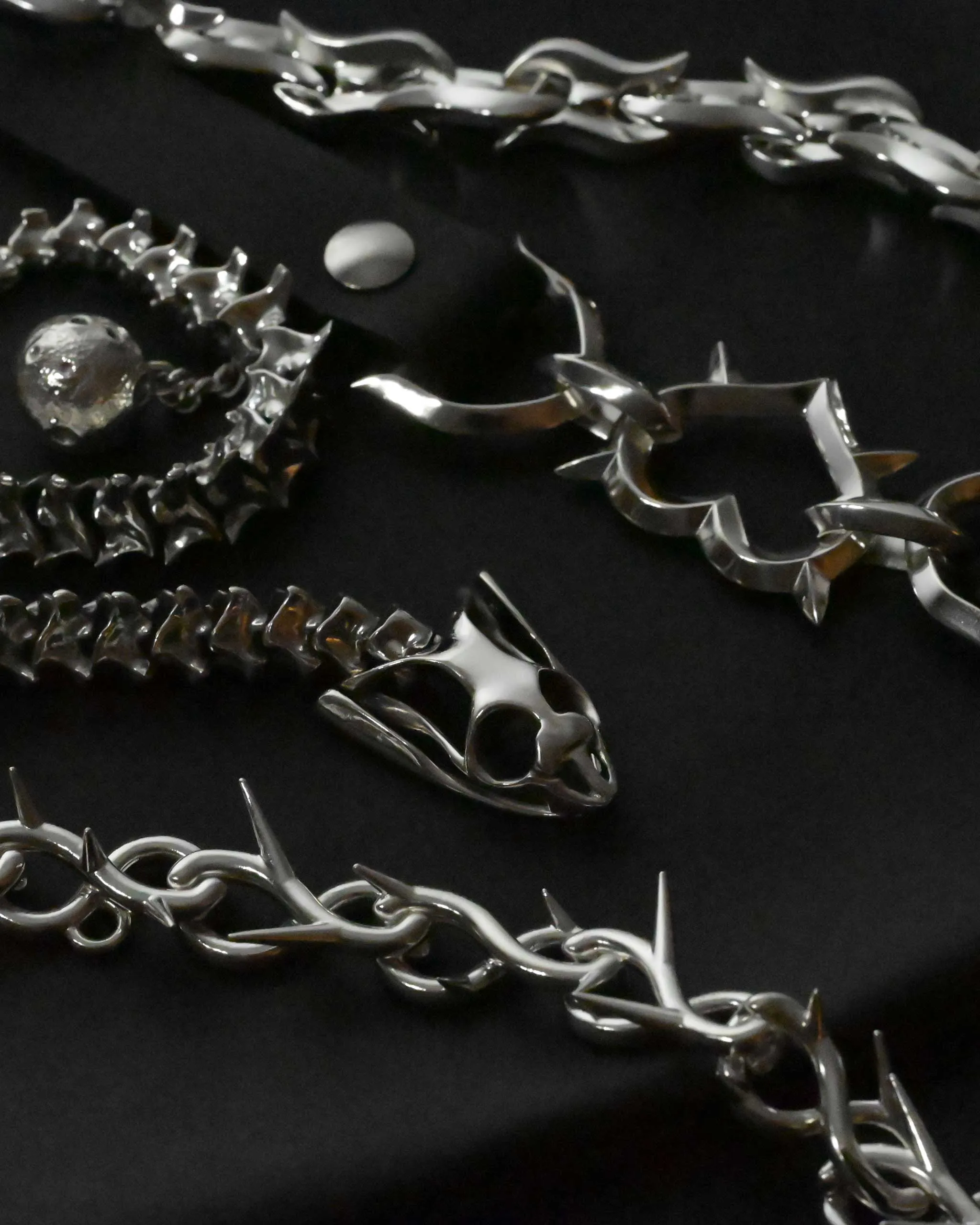“My friends were the ones who wore a lot of adornments. So I kind of got influenced by them, I guess.” Courtesy of Allan Matudio
Raised in Montreal by Filipino parents, Allan Matudio trained in science, video game illustration, and metalwork before turning to jewelry.
In Allan Matudio’s hands, metal turns to memory and jewelry becomes a vessel for myth. A necklace is never just a necklace. It becomes the Bakunawa, the sea serpent that swallows the moon, or an anti-strand of warped pearls, buckled in sterling silver, worn tight against the throat like a silent act of defiance. “I do try to make my work counter to what you would think Filipino jewelry would look like. It’s beautiful, but it’s not conventional.”
Matudio’s practice grew from unlikely beginnings: a working-class childhood in Montreal, surrounded by misfits, translating for his immigrant parents, and navigating a francophone city that often reminded him of difference. “Montreal, being a francophone city, was a little tricky because Filipinos are often anglophones, right? So, we kind of had it hard because accessibility to services were a bit trickier and just trying to communicate with your environment really could be really tricky. For example, I had to be my parents’ translator at times. And, just a general kind of low-key racism that happened in the diaspora was a reality.” Out of that dissonance came an instinct to create his own aesthetic language. “I grew up with a lot of people from the streets and always around punks. So I wanted to make pieces that were more relevant to my environment.”
“I like to see myself as a storyteller, first and foremost, and jewellery is just a medium for storytelling.”
Before metal, there were pixels. With a background in sciences and a career in video game illustration, Matudio built worlds in 3D long before he carved his first stone. “I have a background in sciences, professionally working in video game illustration, which is how I got the skills to do 3D modelling. A lot of my work actually, for the rings has been 3D modelled, because I wouldn’t be able to carve such small details in these pieces.” Eventually, he left the screen for the bench, training at the Metal Arts Academy and the Gem and Minerals Club of Montreal, where he immersed himself in gemmology and metalwork.
What anchors his designs is not technique but story. To reconnect with a heritage blurred by distance, he turned to his grandmother’s folktales and stacks of books. “Because when you grow up in Canada, you’re so disconnected to your Filipino identity. At one point, I was a lot more proactive in learning about it. So I started asking family, asking my grandma about the different stories that she grew up with and just straight up buying a s*** tonne of books so I could reconnect in that way.” Out of that study emerged jewels that carry legends: the carabao sheltering beneath a mango tree, Maria Makiling imagined as a dominatrix. “I like to see myself as a storyteller, first and foremost, and jewelry is just a medium for storytelling.”
Still early in his journey, Matudio designs with legacy in mind. “Ultimately, I just want the next generation of jewelers to be inspired by my work, kind of like the same way that the jewelers inspired me before me.” He cites New York–based designer Chris Habana and the pre-colonial ancestral gold treasures preserved at the Ayala Museum. “I think what I’m working on now is still in its infant stage, and I’m excited to see it become more refined.” His pieces feel like fragments of myth unearthed and reforged, wearable archives of resistance, radical care, and return.
- For The Love Of The Craft: Suzette Ayson On Her Lasting Vision for JMA Jewelry
- If Gems Could Talk: Alahas Tells the Story of Philippine Identity through Jewelry
- Metal Works: Jewelry Label Caro Wilson Is a Love Note to Baguio and Its Craft
- Jewelry Designer Jenny Syquia Wants Her Pieces to Become Heirlooms
